Analysis of a ZEISS IKON System-M
Origin & development
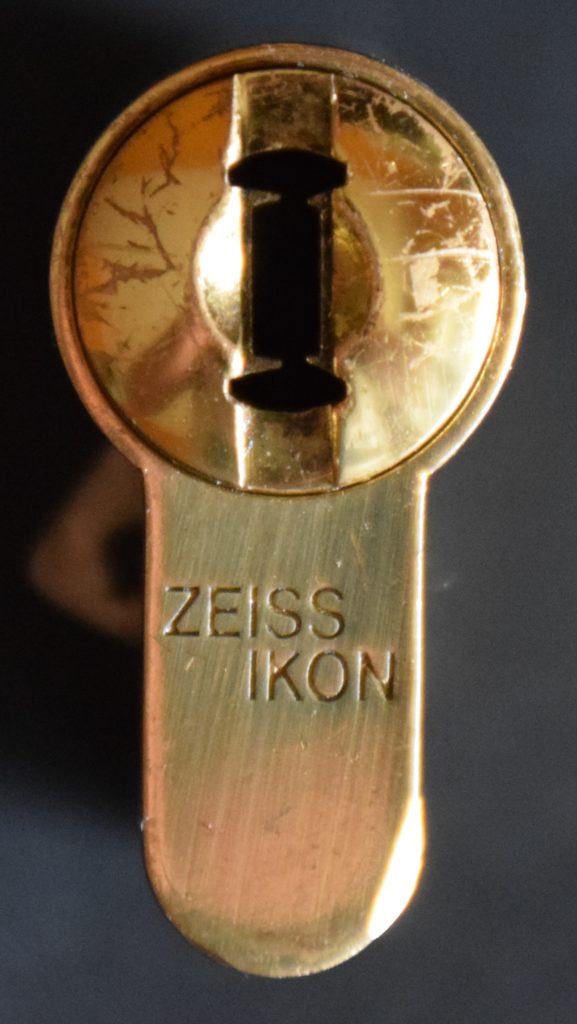
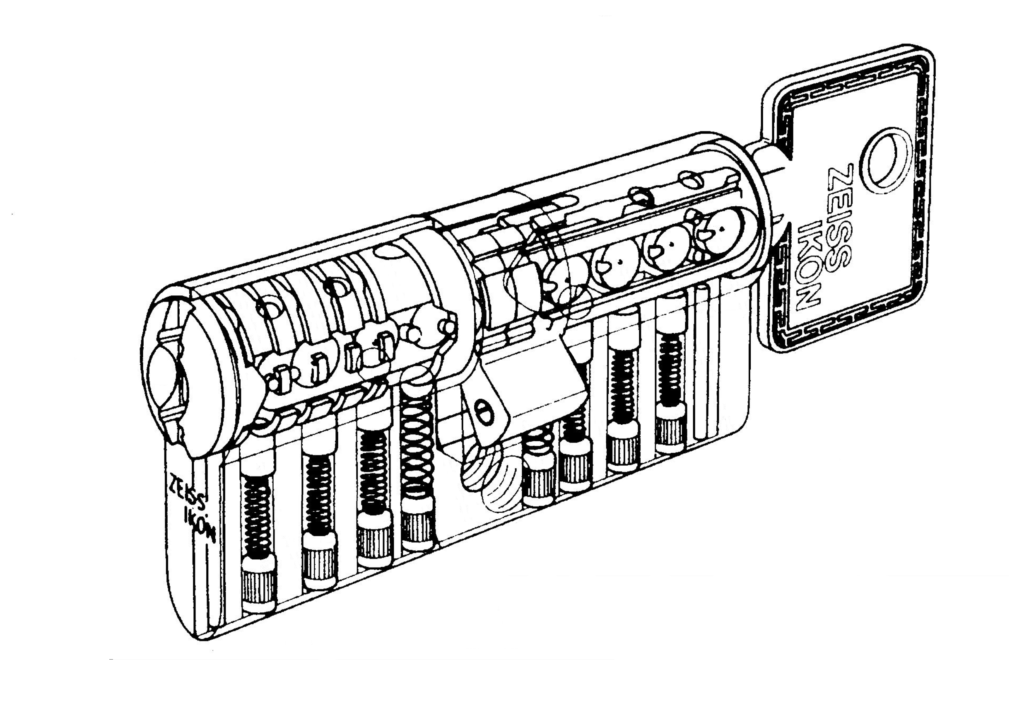
The ZEISS IKON System-M cylinder is a clone of the EVVA MCS, a new lock concept based on a technology of magnetic rotors using permanent magnets. The Magnetic Code System (MCS) was developed from 1975 to 1982 and patented in 1975 (N°347,284) by an Austrian company EVVA WERKE. The development has been performed jointly by EVVA and ZEISS IKON in collaboration with the technical university of Vienna (1). A MCS’s trademark was registered in 1981 which will mark the launch of production in 1982. Around the eighties, ZEISS IKON will produce it under license with slight differences in the lock contruction and its assembly.
Le cylindre ZEISS IKON Système-M est une copie de l’EVVA MCS, un nouveau concept de serrure basé sur une technologie de rotors magnétiques munis d’aimants permanents. Le système de codage magnétique (MCS) a été développé de 1975 à 1982 et breveté en 1975 (N°347,284) par l’entreprise Autrichienne EVVA WERKE. Son développement a été effectué conjointement par EVVA et ZEISS IKON avec la collaboration de l’Université Technique de Vienne (1). La marque MCS est enregistrée en 1981 qui lancera sa commercialisation dès 1982. Au cours des années 80, ZEISS IKON la fabriquera sous licence avec de légères différences dans sa construction et son assemblage.
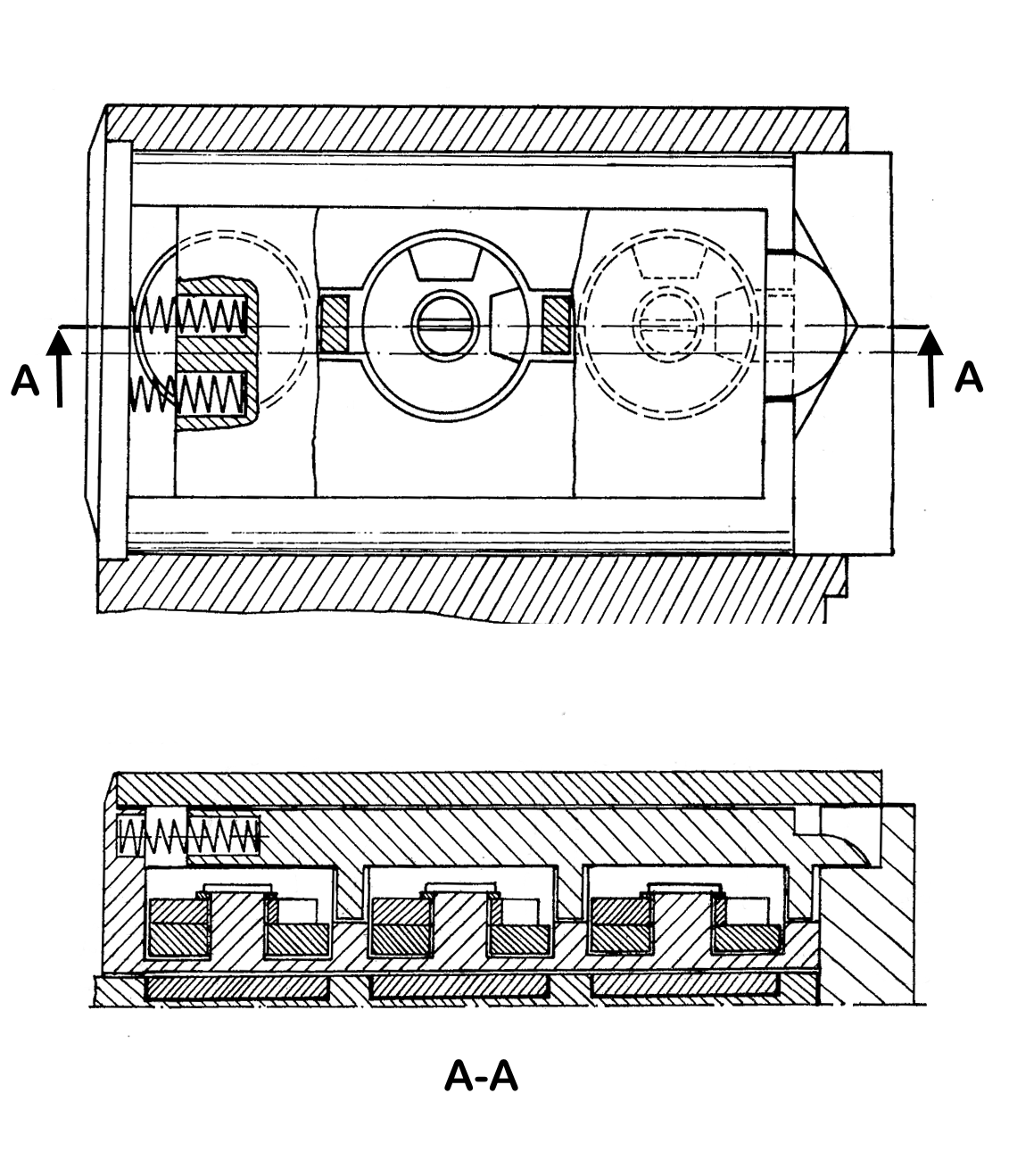
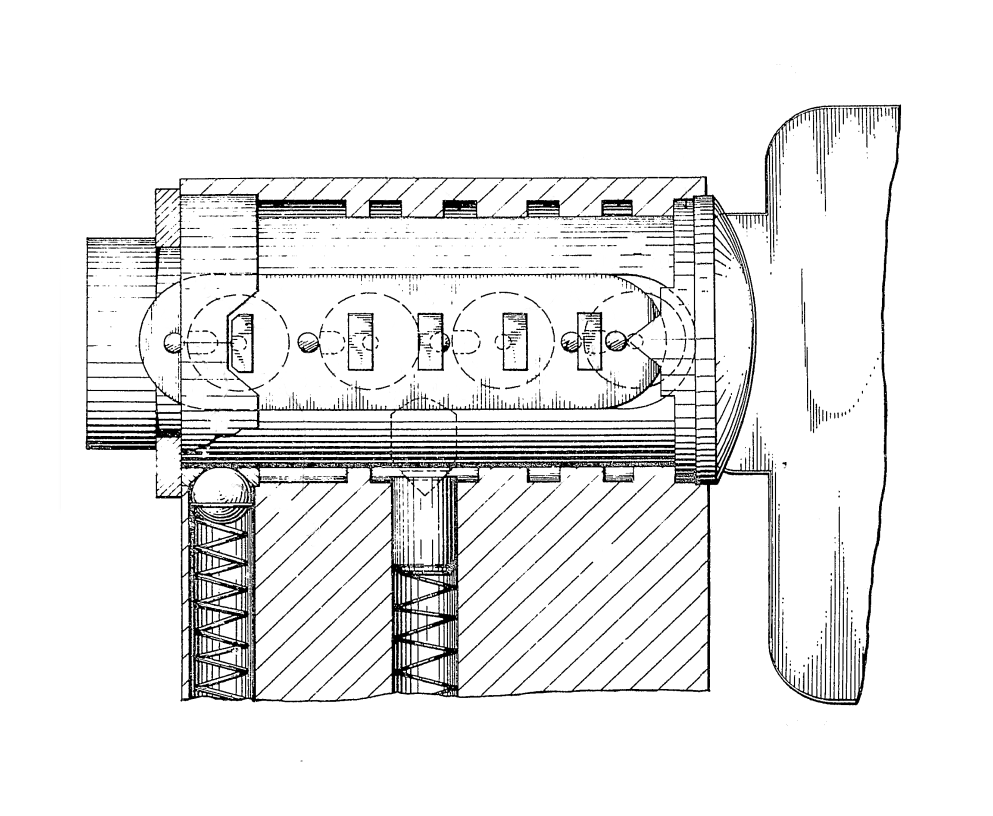
What’s inside ?
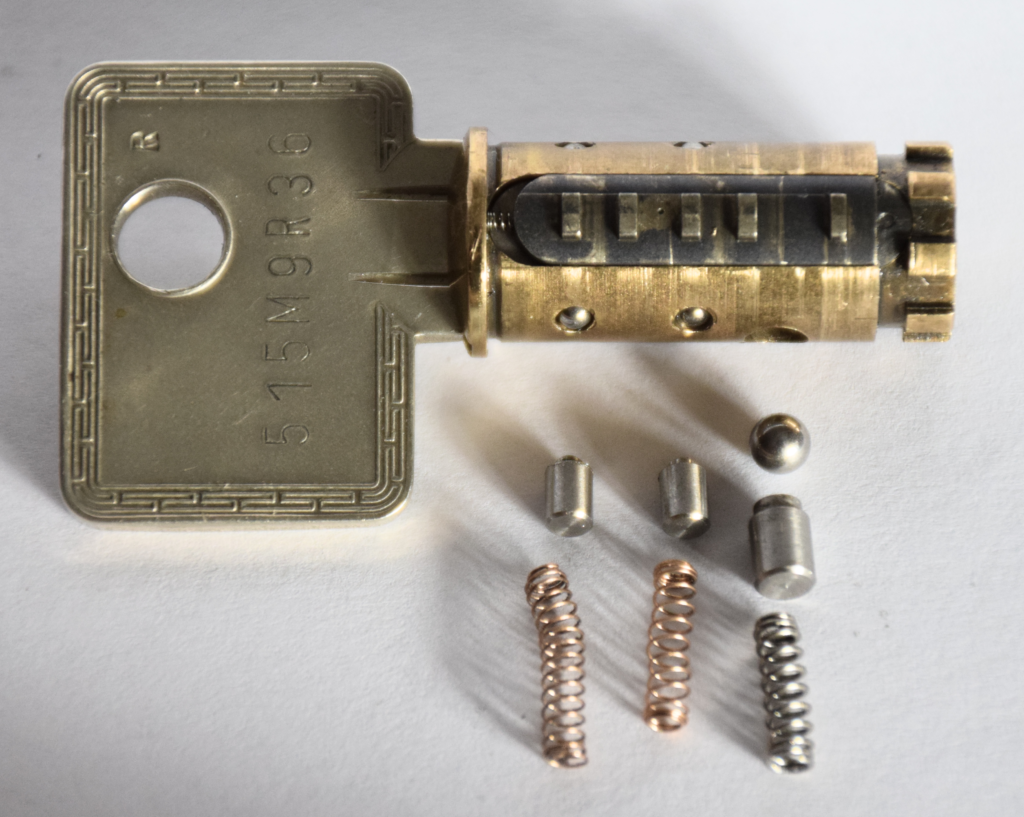
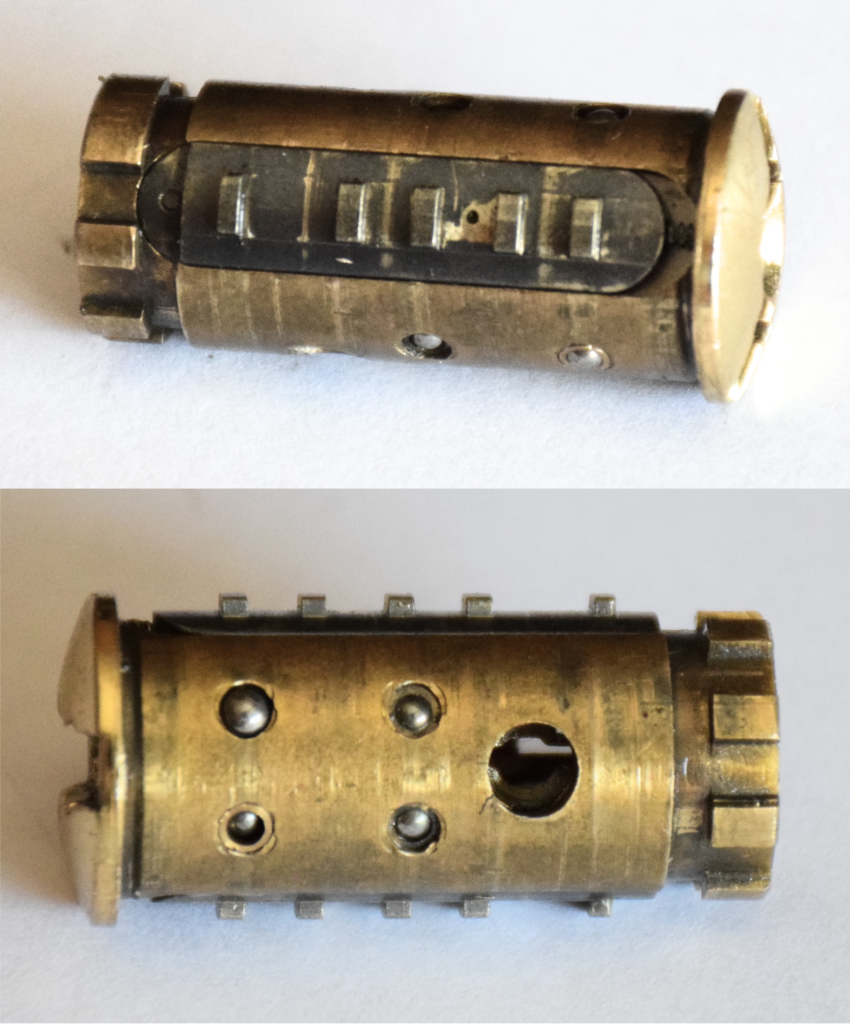
The first generation contains 8 magnetic rotors with its permanent magnets, 8 stainless steel balls and 1 retaining ball allowing to prevent the withdrawn of the key during the rotation. An additional ball bearing fixe the locking ring on contact with two sidebars.
La première génération contient 8 rotors munis de leur aimants permanents, 8 billes en inox et une bille afin d’empêcher le retrait de la clef pendant la rotation. Une bille supplémentaire verrouille l’anneau de blocage en contact avec deux barres latérales.
How it works ?
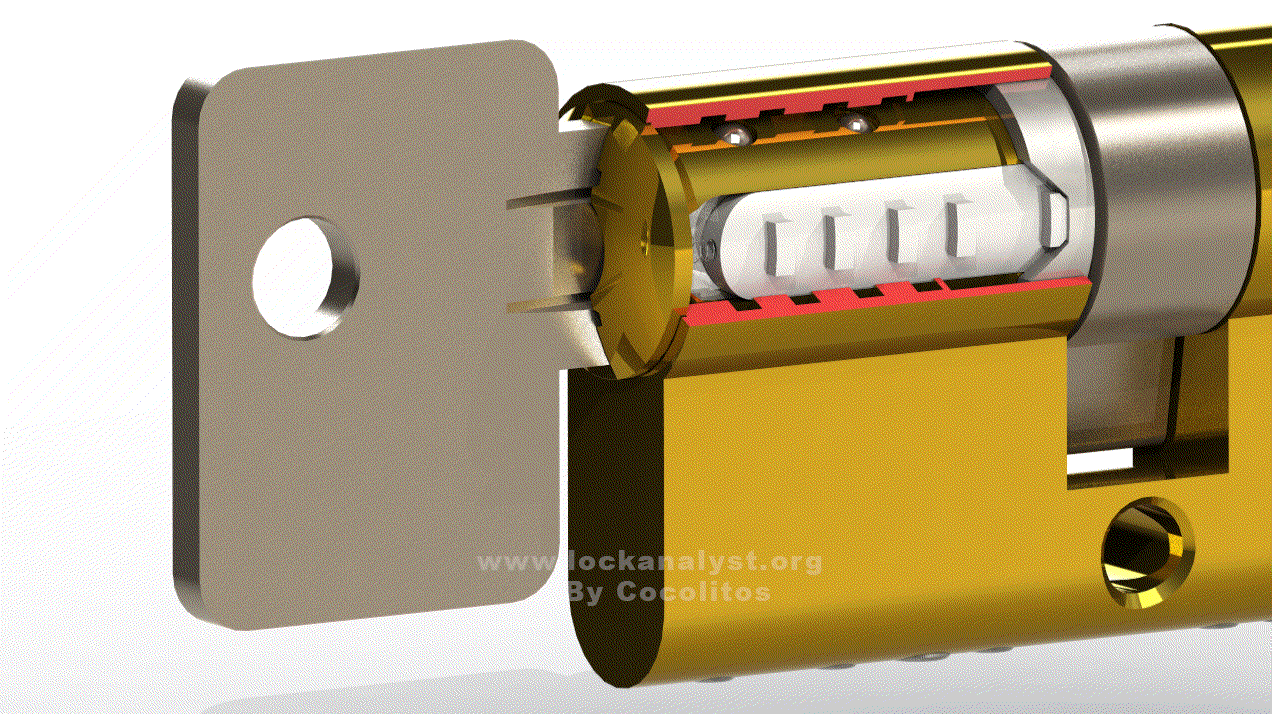
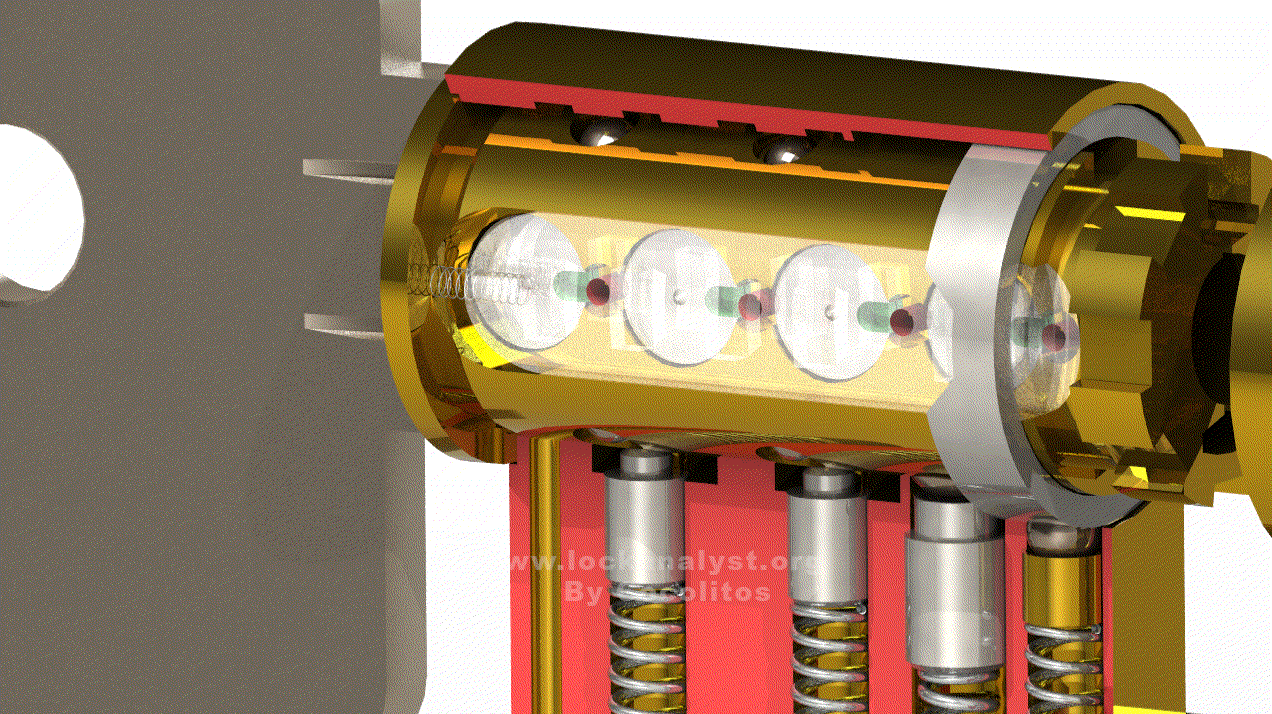
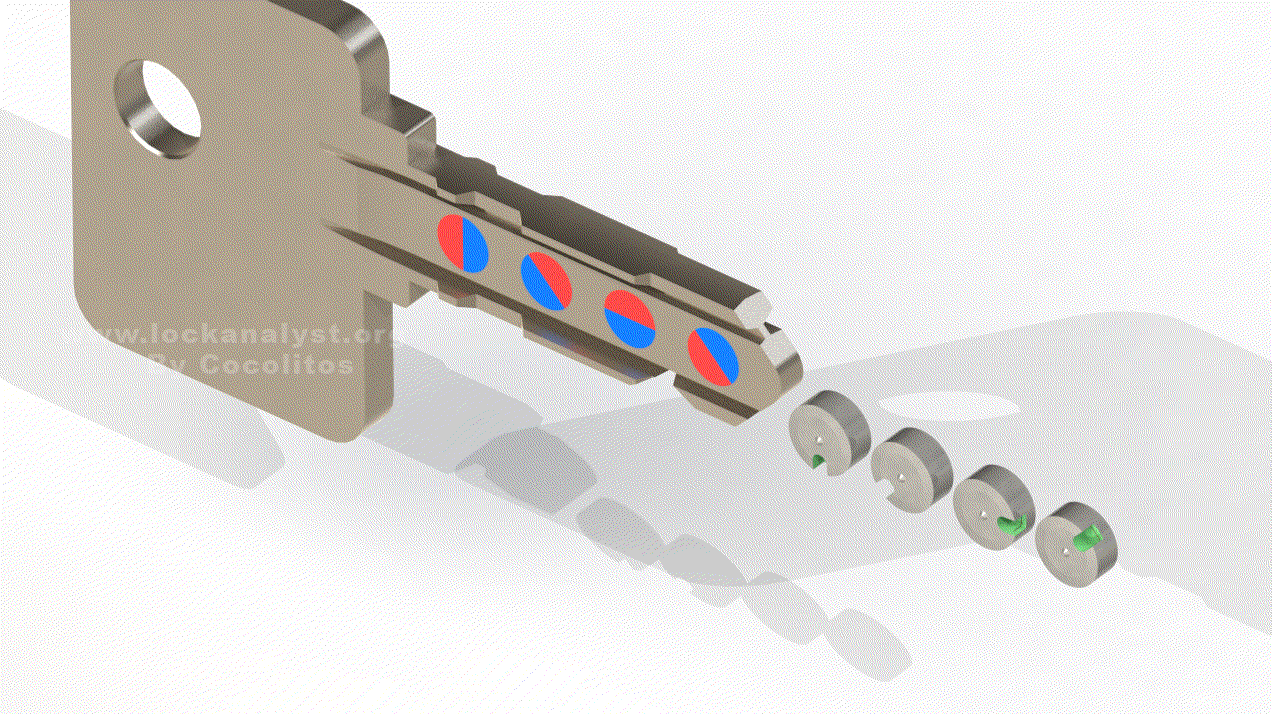
When the correct key is inserted, all balls fits the plug and all magnetic rotors gates are aligned. The plug turn about 30° and sidebars contacts the locking ring. In its rotation and under the effect of its springs, sidebars slide forward on contact with locking ring. When you turn back the key, sidebars slide backward and the retaining ball allows to index the plug in locked position. The key can be withdraw and all magnetic rotors are scrambled.
Quand la bonne clef est insérée, toutes les billes épousent le rotor et toutes les encoches des rotors magnétiques sont alignées. Le rotor tourne d’environ 30° et les barres latérales entrent en contact avec l’anneau de blocage. Dans sa rotation et sous l’effet de leur ressort, les barres latérales glissent sur l’anneau de blocage et se déplacent longitudinalement vers l’avant. Quand on tourne la clef en sens contraire, les barres latérales glissent d’avant en arrière et la bille permet d’indexer le rotor en position de verrouillage . La clef peut être retirée et brouille la combinaisons des rotors magnétiques.
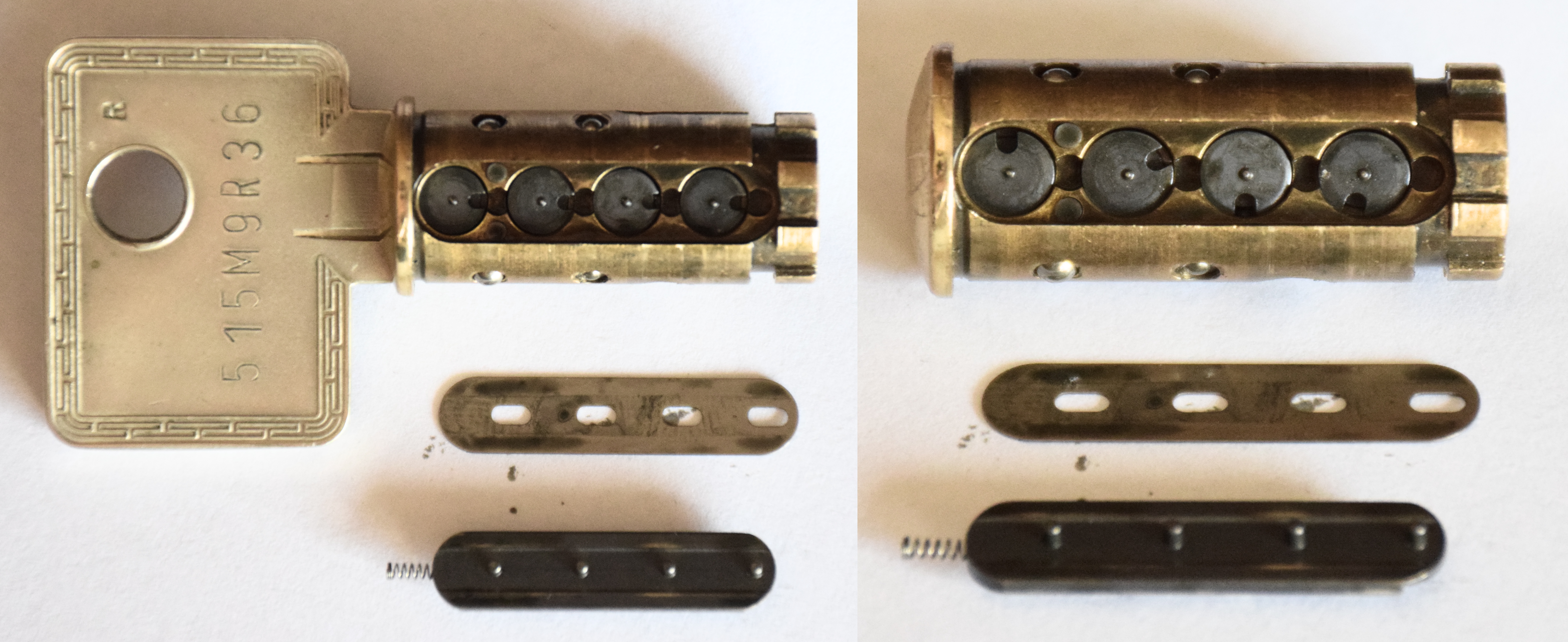
Magnetic Coding System (MCS)
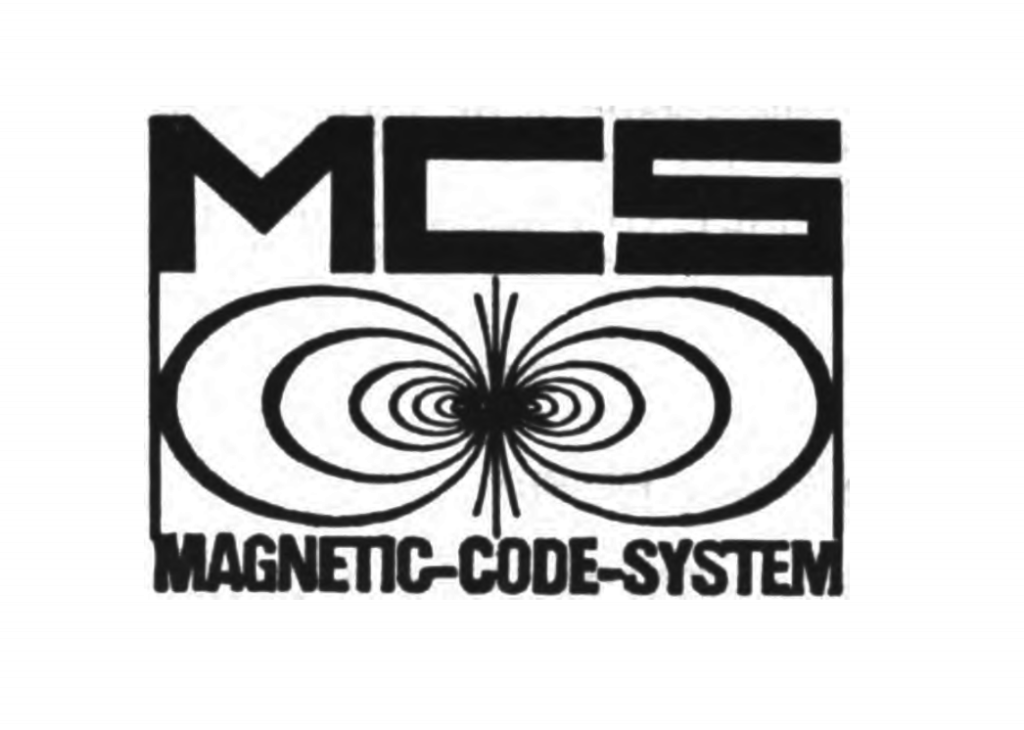
After 7 years of research, Mr Kirchmayr, Mr Grössinger, Mr Voytjech, Mr Lanik and Mr Reumann of institute for experimental physics in Technical University of Vienna have been worked on the MCS’s project. Through a series of experiments, they succeeded in establishing the magnetization process for the magnetic code of the key.
The key contains 4 magnets of 4mm in diameter and 2.2mm in thickness which based on samarium-cobalt permanent magnets. All surface of these magnets is magnetically coded differently on both side and can use 8 directions (2). The key blank is made by stamping and key’s grooves are milled using special profiled mills. All non-magnetized magnets are inserted one by one into their housings and are magnetically encoded one after the other so as not to disturb the magnetic field of the neighboring magnet (3). Then key magnets are stamped by a special device (N°365,712).
Après 7 années de recherche, Mr Kirchmayr, Mr Grössinger, Mr Voytjech, Mr Lanik and Mr Reumann de l’institut de physique expérimentale de l’Université Technique de Vienne ont travaillé sur ce projet. Grâce à une série d’expérimentation, ils ont réussi à établir un procédé de magnétisation pour le codage magnétique de la clef.
La clef est composée de 4 aimants de 4mm de diamètre et 2.2mm d’épaisseur à base d’un mélange de samarium et de cobalt. Chaque face de ces aimants a un codage magnétique différents des deux cotés et peut s’orienter selon 8 directions définis (2). L’ébauche de la clef est découpée à la presse et les rainures longitudinales sont usinées à l’aide d’une fraise-scie profilée. Tout les aimants non-magnétisés sont insérés un par un dans leur logement et sont codés magnétiquement les uns après les autres de façon à ne pas perturber le champ magnétique de l’aimant voisin (3). Puis ils sont matés à la presse hydraulique avec un outillage spécifique (N°365,712).

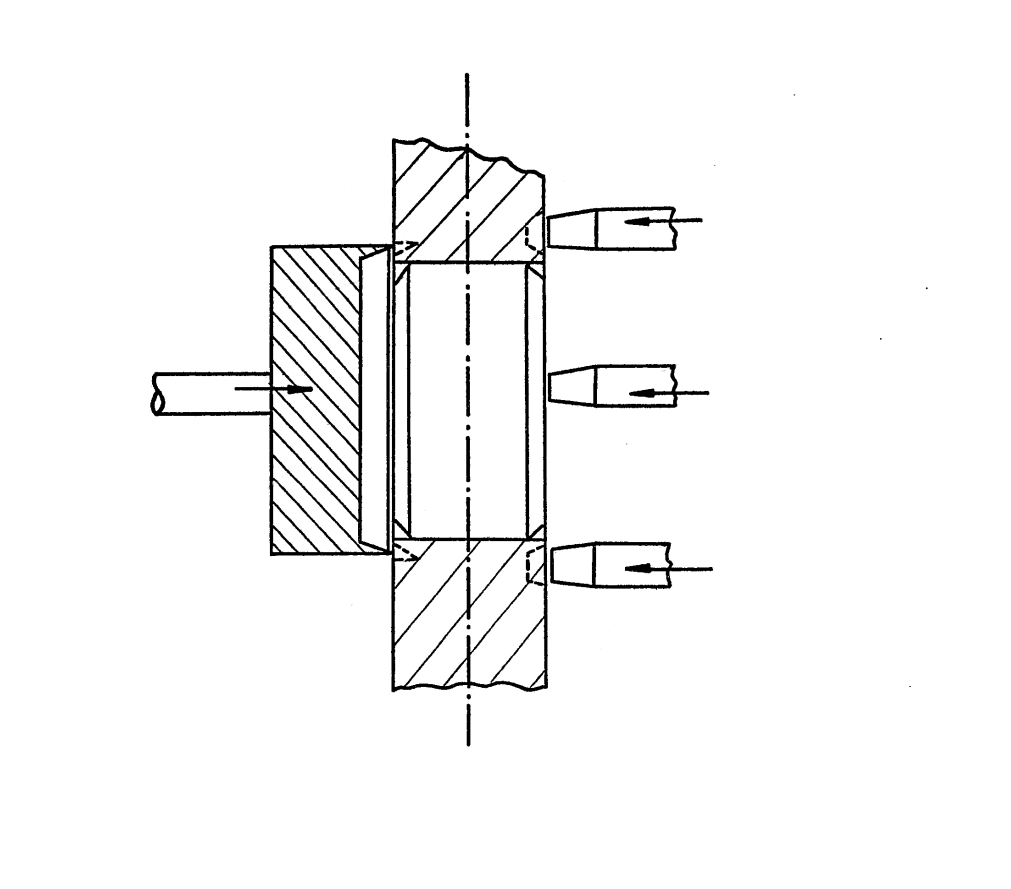
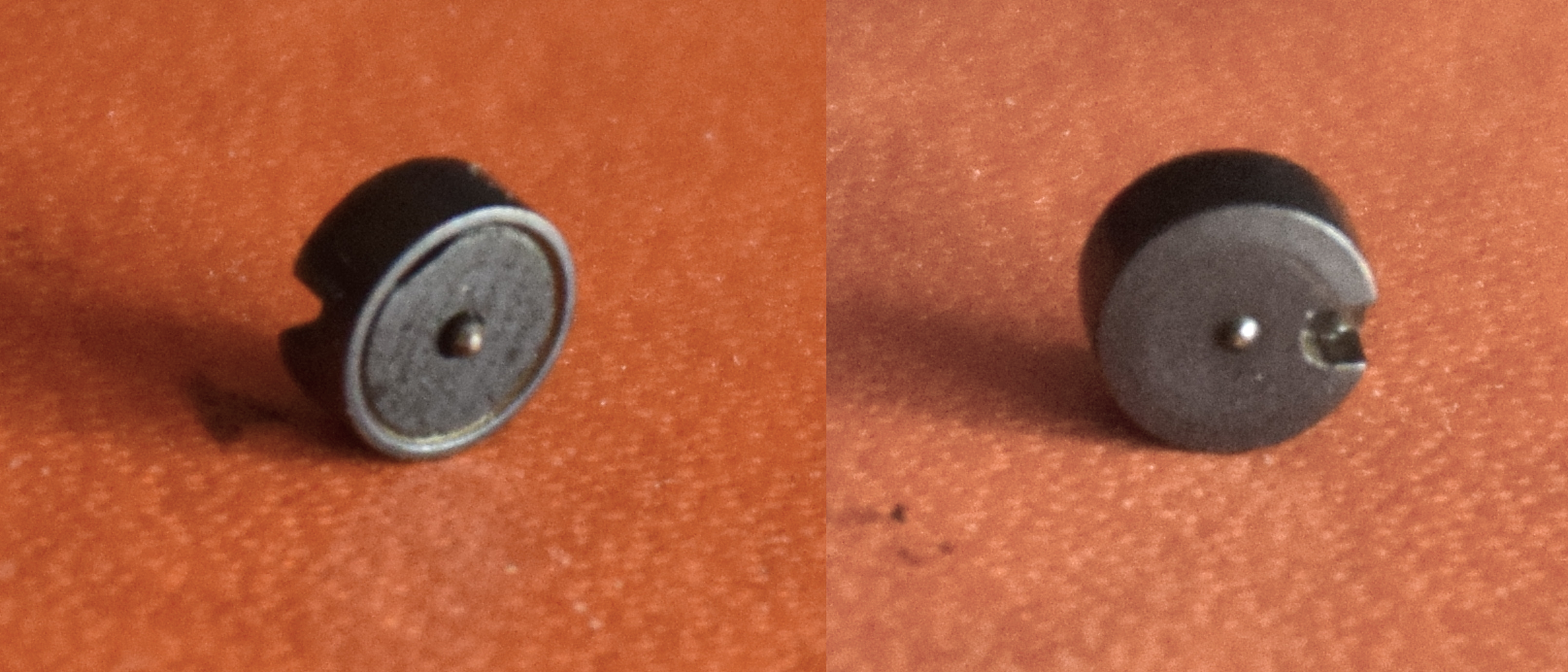
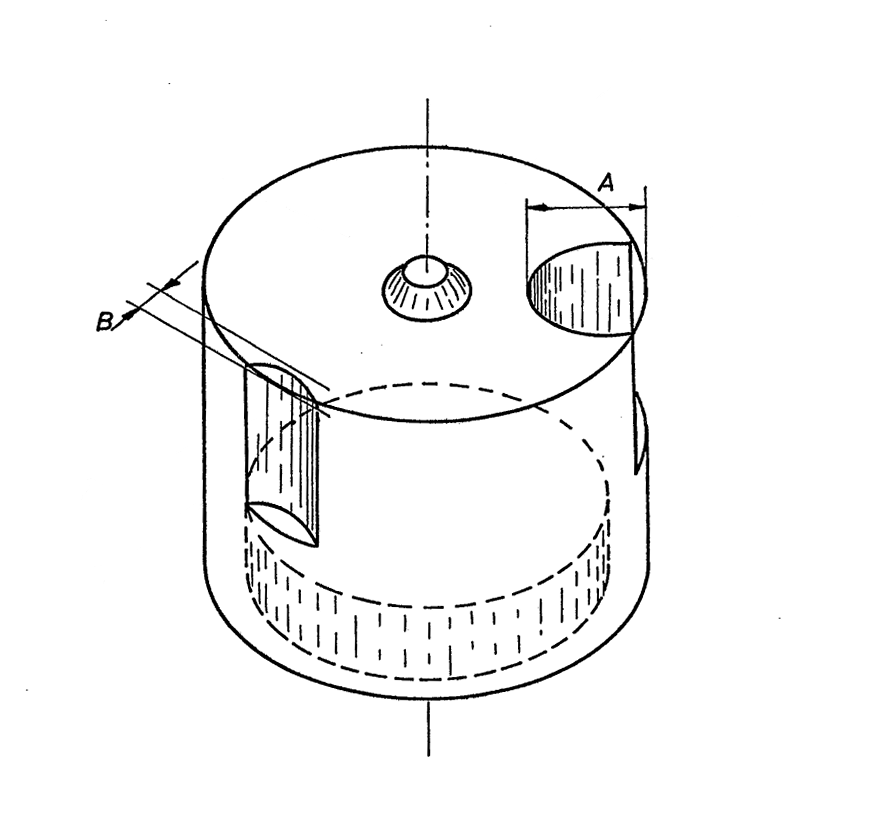
The rotor is made in two parts, a little stainless steel capsule in which is glued a permanent magnet. A groove is machining with the angle corresponding to the 8 different orientations (N°371,194). This configuration offers 8^8 = 16,777,216 keys
Le rotor est constitué de deux parties, une petite capsule en inox dans laquelle est collé un aimant permanent. La rainure est usinée avec un angle correspondant aux 8 différentes orientations (N°371,194). Cette configuration offre 8^8 = 16,777,216 clefs.
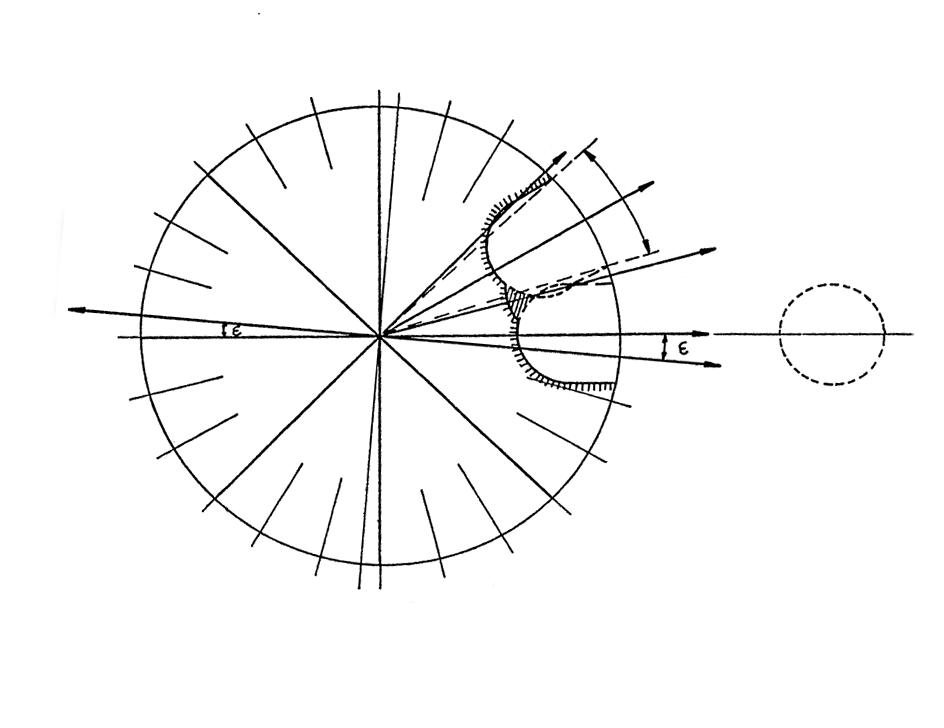
The friction of the magnetic rotor against its housing is the main problem in this new system. Even if the quality of a traditionnal pin-tumbler lock cylinder is well made, the magnetic rotors are no contact with the key and must interact with magnetic field of the key’s magnets allowing to rotate them accurately. After many experiments, it has been determined that an angular defect of 5° must be taken in account to define the number of combination for one rotor (N°363,336). For this reason, only 8 orientation can be possible (2).
La friction du rotor magnétique contre son logement est le principal problème de ce nouveau système. Même si la qualité d’un cylindre à goupille traditionnel est de bonne facture, les rotors magnétiques n’ont aucun contact avec la clef et doivent interagir avec le champ magnétique des aimants de la clef afin de les orienter de façon précise. Après de nombreuses expérimentations, il a été déterminé qu’un défaut de 5° devait être pris en compte pour définir le nombre de combinaisons pour un rotor (N°363,336). Pour ces raisons, seulement 8 orientations sont possibles (2).
Magnetization process
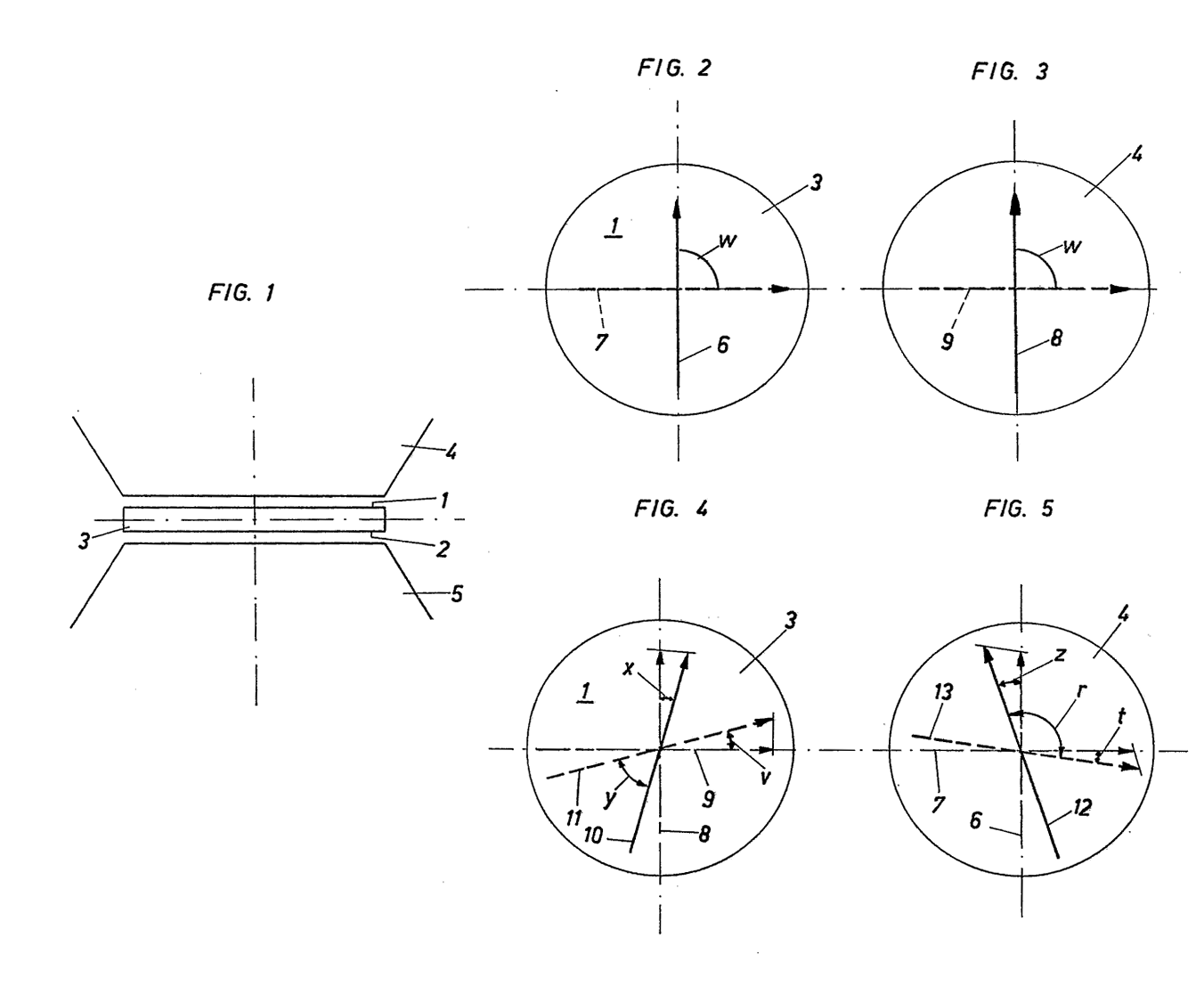
Magnetization and material’s choice are the key in this new technology. The key must comply with the key copy protection, a high number of keys and a good wear resistance. To counter the friction, the magnetic rotors must rotate with enought torque to align its gates accurately. In the other hand, the key’s magnet must be stable against demagnetization. That is why the choice of the material turned towards the samarium-cobalt alloy. Its excellent coercivity improves protection against key counterfeiting because it is impossible to demagnetize. A magnetization process was designed By Mr Franz Reumann allowing to orient the magnetic field independently of the two sides of the permanent magnet (N°357,656).
La magnétisation et le choix du matériau sont la clef de cette nouvelle technologie. La clef doit répondre aux normes par une résistance contre la copie des clefs, un nombre élevé de combinaisons de clefs et une bonne résistance à l’usure. Pour contrer la friction, les rotors magnétiques doivent tourner avec suffisamment de couple pour aligner leur encoche de manière précise. C’est pour cela que le choix du matériau s’est orienté vers un alliage de samarium et de cobalt. Son excellente coercivité améliore la protection contre la contrefaçon des clefs car elle est impossible à démagnétiser. Le procédé de magnétisation a été conçu par Mr Franz Reumann permettant d’orienter le champ magnétique indépendamment des deux faces de l’aimant permanent (N°357,656).
Key control system
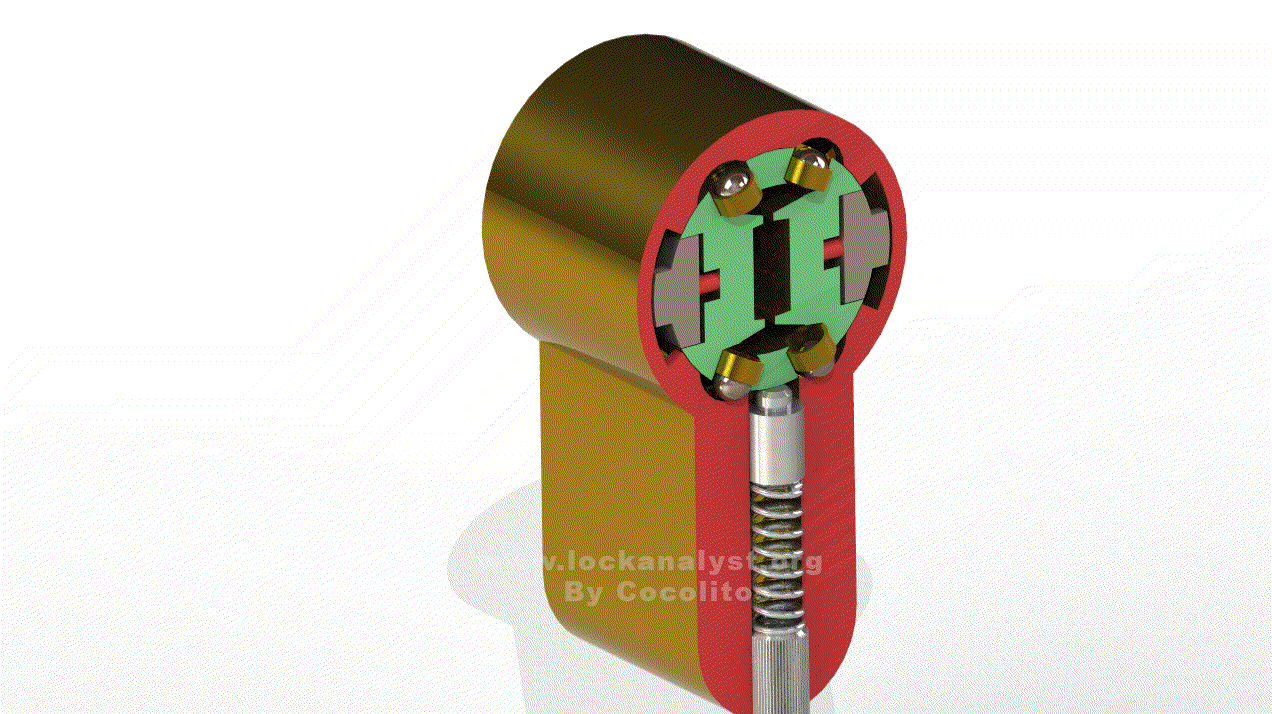
This system using a serie of balls prevents the rotation of the plug without the correct key. When a key is inserted, balls slide on the key’s wings and fall in its corresponding cuts. If it’s wrong key, balls protude out in the groove made in the shell and the plug can’t rotate. We have two different diameters on 8 positions for this first generation of the “System-M” which can offer 2^8 = 256 permutations. The result is an astronomic number of theoritical combinations of (8^8)*256 = 4,294,967,296 combinations for only one keyway !!
Ce système utilisant une série de billes empêche la rotation du rotor sans la bonne clef. Quand une clef est insérée, les billes glissent le long des ailettes de la clef et tombent dans des découpes sur la clef. Si la clef ne possède pas ces découpes, les billes restent logées dans la rainure pratiquée dans le stator et le rotor ne peut être libéré. Nous pouvons distinguer deux diamètres de billes sur 8 positions pour cette première génération du “Système-M” permettant d’offrir 2^8 = 256 permutations. Le résultat est une capacité combinatoire théorique astronomique de (8^8)*256 = 4,294,967,296 combinaisons pour un seul profil de clef!!
A special thank you to my friend Cinok for landing me this beautiful cylinder.
Cocolitos
(1) “Stasi Secret Service Tools: Die geheimen Schlossöffnungswerkzeuge der Abteilung VIII”, O. Diederichsen, 2018, p226-227.
(2) “A high quality magnetic lock system for very grand masterkey systems”, H.R. Kirchmayr and R. Grössinger, Technical University of Vienna, 1982.
(3) German patent N° 2,830,743